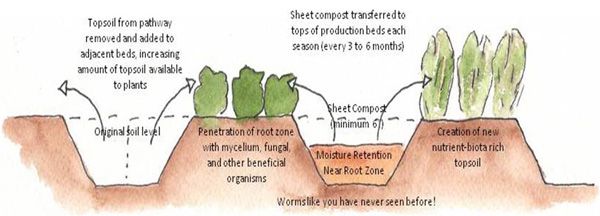“Erik Knutzen and Kelly Coyne have been farming their yard in Los Angeles for over a decade. In addition to a mini orchard and extensive veggie garden, they have all the instruments of an urban homestead: chickens, bees, rainwater capture, DIY greywater, solar fruit preserver, humanure toilet, rocket stove, adobe oven. But they don’t like to talk about sustainability of self-sufficiency, instead they prefer the term self-reliance.
organic
Funding Your Homestead with High Value Cash Crops
Anyone moving to the country and starting a homestead is faced with how to pay the bills. After all, there aren’t many jobs in most rural areas. One option is to finance your homestead with high value, easy to grow, easy to sell crops.
Survival Food Forest with Chickens: Zero to 10 Years Tour!
“Clip from the new “Surviving Collapse – Designing your way to Abundance” is a story on how Geoff Lawton discovered permaculture and what he did to prepare for any global crisis.
Backyard Farmers by Necessity: Self-sufficient & Debt-free
“When Myrna and Earl Fincher married 53 years ago they started farming their yard “out of necessity”. Today, the Finchers make a living selling their organic produce to restaurants and at the local farmers’ market twice a week for much of the year. They had no experience as farmers, but learned by trial and error.”
Ancient Food Forests
Food forests are the most productive agriculture system in the world. They have the lowest labor and highest yield. Food forests produce more food, medicinal plants, fiber, building materials, fodder, spices, herbs, flowers and other beneficial plants per square meter than any other farming method. Imagine how much work goes into tilling, planting, spraying and weeding row crops such as corn every year. In stark contrast, food forests are virtually self-sustaining once established. They’re also less vulnerable to pests and swings in weather.
Modified Raised Bed Gardening with Wood Chip Trench Composting

“A major issue in sustaining vegetable production is maintaining high soil quality in the face of common practices that work against it. Vegetable growing often involves intensive tillage, cultivation, exposure of almost-bare soil to the sun and rain for long periods, and heavy traffic from people and equipment. All of these practices tend to destroy soil organic matter and soil structure while increasing soil compaction.
